Coin collecting – also known as numismatics – is a serious business. Collectors from around the world are prepared to pay huge prices for the rarest specimens. But what are those coins – and how much are they worth?
That’s what we’re going to find out! We’re going to take a tour of the 10 most valuable coins to have come to the market. And we’ll learn what makes them so special.
So read on to find out more!
Most Valuable Foreign Coins
1. Sestertius of Hadrian, Ancient Rome
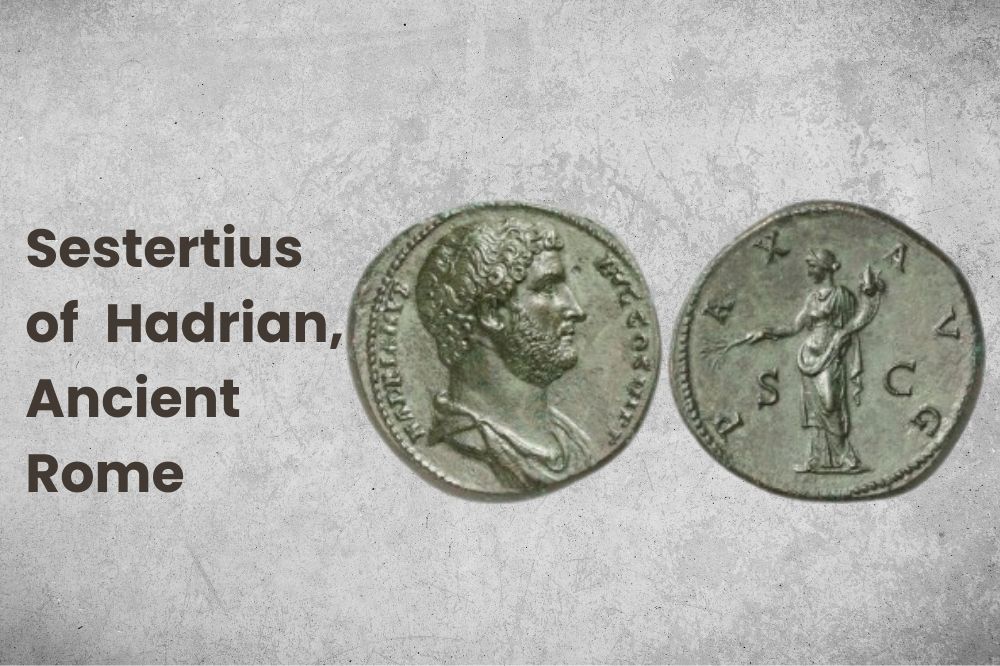
This coin from ancient Rome is amongst the oldest on our list. A sestertius was a brass or silver coin which was made only rarely, and for specific occasions. This one, produced during the reign of the Emperor Hadrian, dates to between 135 and 136 A.D.
The value of a sestertius varies wildly, depending on its age, quality and condition. It’s possible to pick up examples for less than $100. But some can be considerably more valuable.
The earlier versions were produced in brass and were much larger than the later silver coins. This gave the engravers a bigger area on which to produced finely detailed portraits. Sestertii from the reign of Nero, 54 to 68 A.D., are particularly prized for their exquisite workmanship.
This coin is considerably later, but sold at auction in 2006 for $1.65 million. There were two reasons it commanded such a high price.
The first was that it was in excellent condition. The second was that it had been convincingly attributed to the master engraver known as Antoninianos of Aphrodisias. The coin was considered to be a masterpiece by a famous artist, exciting coin collectors into a bidding frenzy.
2. 100 Ducats, Sigismund III Vasa, Polish-Lithuanian Commonwealth
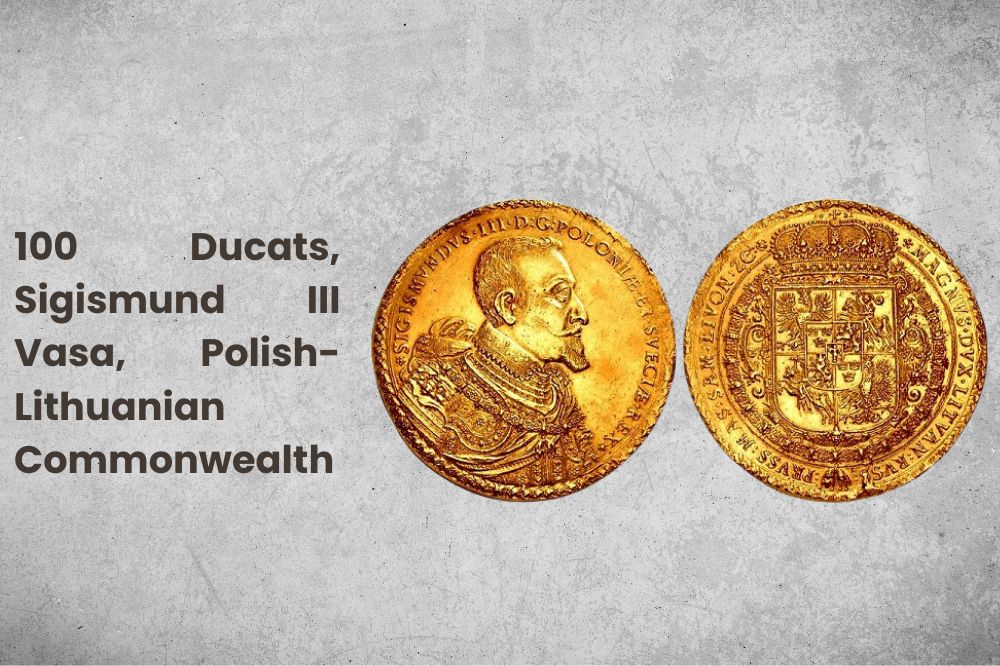
This 100 Ducat specimen bears the mantle of the most expensive Polish coin ever to have been minted. Its value is attached to the unique historical moment in which it was created.
In 1586, the Polish King Stephen of Báthory died without children. Following various battles, the Swedish – and ultra-Catholic – prince Sigmund III Vasa became king of the Polish-Lithuanian Commonwealth. This was then the largest country in central Europe and a considerable power.
This coin is believed to have been minted to celebrate the 1621 Battle of Chocim. There, the Commonwealth soldiers successfully held out against the Ottoman Army, which had hitherto appeared invincible. For the Catholic Sigismund, it was a victory of Christianity over Islam.
The coin was made of solid gold. The obverse showed Sigismund in ornamented armor and a commander’s sash. The reverse depicted the crowned coat of arms of the Polish-Lithuanian Commonwealth.
It sold in 2018 for $2.16 million.
3. 723 Umayyad Gold Dinar, Umayyad Caliphate
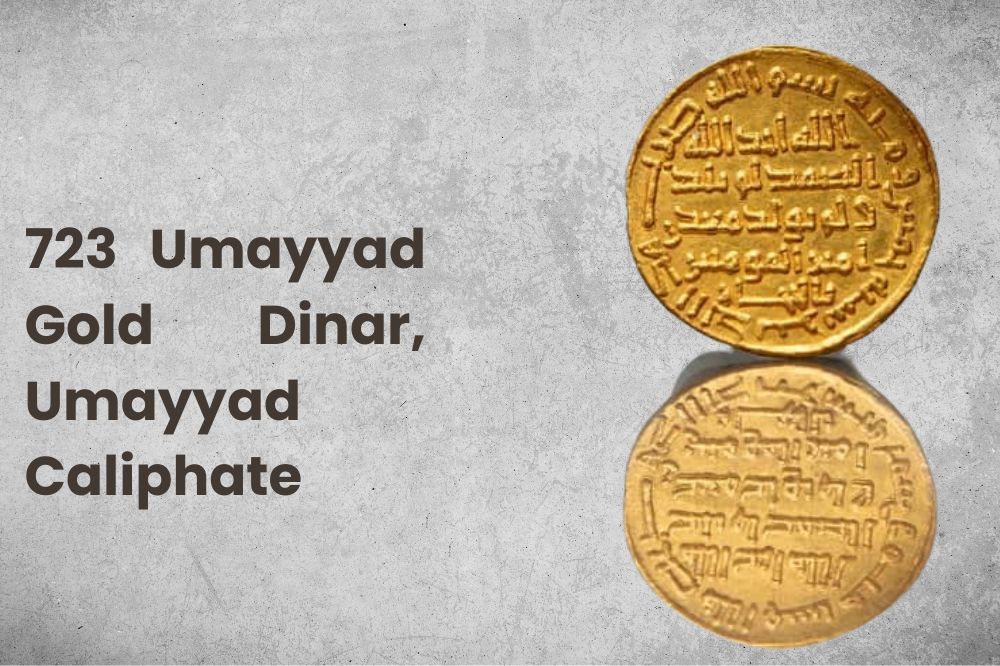
This gold dinar coin dates from 723 AD. But it’s more than its advanced age that creates its value.
It was minted in the Umayyad Caliphate and is made of solid gold. It’s a thing of considerable beauty – but even so, similar dinar coins have sold for a few hundred dollars. When this one came to auction in 2021, the price equalled the record achieved for an Islamic coin.
So what is it about this coin that makes it so special? The answer lies in the Islamic script engraved on it. This reads “Ma’din Amir al-Mu’minin bi’l-Hijaz”. It means “Mine of the Commander of the Faithful in the Hijaz”.
This makes it the first Islamic coin to mention a specific location. The mine referred to lies in present day Saudi Arabia. And the reference to the Commander of the Faithful is a reference to the Caliph, a direct descendent of the Prophet Muhammad.
The coin therefore has religious as well as historic significance. And it is one of only 12 or so specimens known to exist.
Originally estimated to make around $1 million, it exceeded all expectations when it came under the auctioneer’s hammer. The final price was over $4 million.
4. Edward III Florin, England
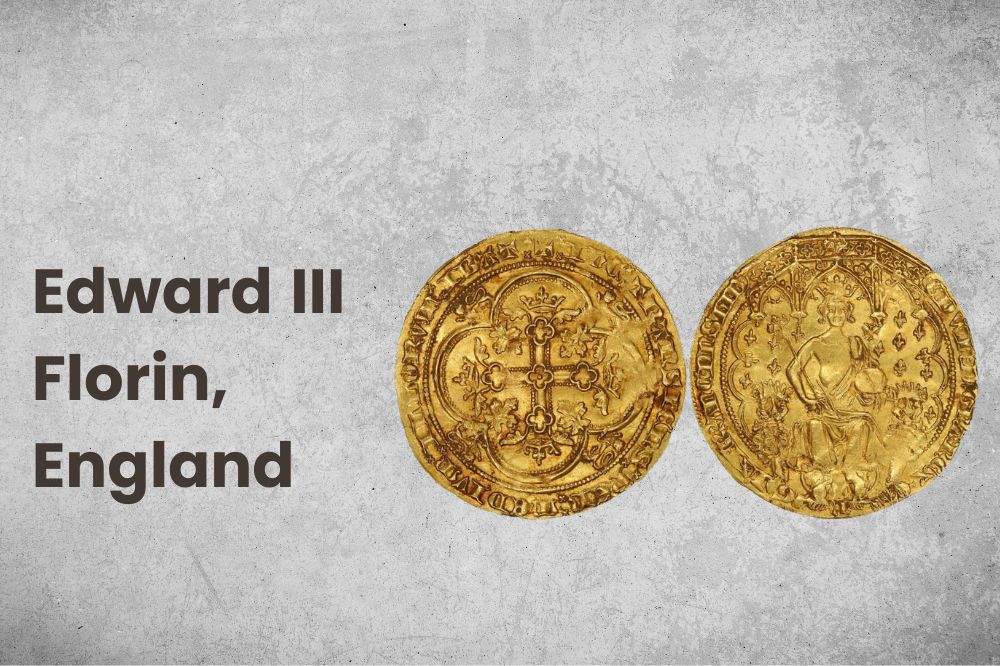
The story of this coin gives hope to treasure hunters everywhere. It was found by a man with a metal detector at an undisclosed location in 2006.
The gold coin is one of only three examples known to exist. The other two were found together in the river Tyne in the north of England by two Victorian schoolchildren. Today those coins reside in the British Museum in London.
This coin is made of 23-carat gold and would have been circulated between December 1343 and July 1344.
One side bears the portrait of King Edward III seated on a throne, a leopard sitting on either side. The depiction has given the coin its common name among collectors – the “double leopard”. The other side shows a cross surrounded by crowns, foliage and lions.
The coin went to auction the same year that it was found. It sold for around $850,000, then a record for a British coin. Today, however, its value has rocketed. It is now estimated to be worth around $6.8 million.
5. Athenian Decadrachm, Ancient Greece
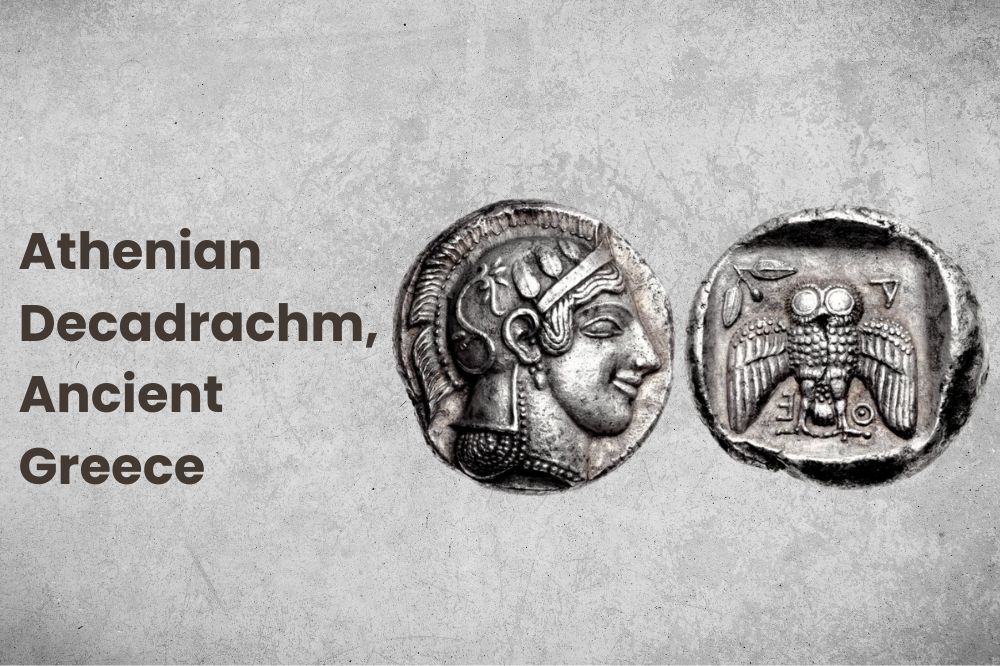
This decadrachm coin set a new record for Greek silver coins when it was auctioned in 2012. It’s thought to date from between 409 and 406 B.C. and came from the coastal city state of Agrigentum. This was part of the ancient Greek empire in what is now Sicily.
As ever, rarity was key to its value. Only ten such coins were known to exist. This one was in excellent condition, with just a tiny crack on the reverse – not bad for a coin over 1,600 years old.
And as with the Sestertius of Hadrian, the engravers of this coin were key to its value. These were believed to be Polyainos and Myron.
The former is thought to have engraved the design on the reverse of the coin. This shows a dead hare on which eagles have landed to feast. The front of the coin is believed to be by Myron. It depicts a man driving a chariot with four horses, with an eagle holding a snake above it.
One theory is that this is actually a medallion, rather than a coin. And it may date from slightly earlier, and be connected to the chariot races of the 92nd Olympic Games, held in 412 B.C.
Whatever the truth of the matter, the coin (or medallion) made big money. It sold for just over $2.9 million at auction.
6. Single 9 Pond, South Africa
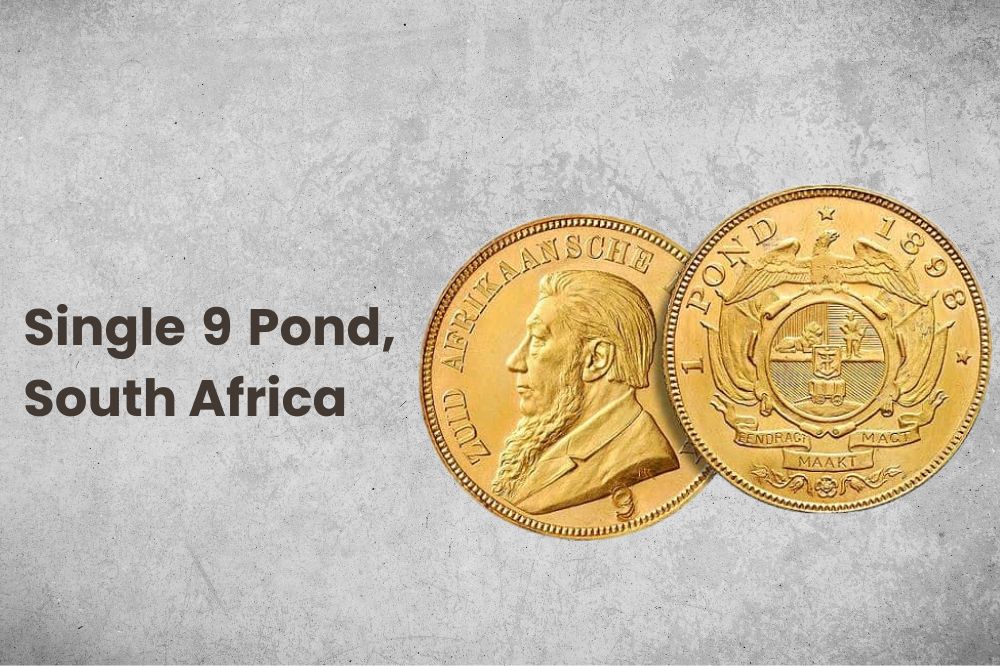
The gold Single 9 Pond is known as the “King of South African coins”. And it’s a coin that’s intimately connected to that country’s struggle for independence.
In 1899, Britain was at war with Afrikaans-speaking Dutch colonists for control of two Boer states. These were the Transvaal, or South African Republic, and the Orange Free State.
Paul Kruger of the South African Republic ordered the production of new coinage, an attempt to demonstrate the country’s independence. New dies were ordered from Germany, but they were intercepted by the British before they could reach South Africa.
But Kruger was not to be deterred. He ordered that dies from the previous year be reused. A 9 would be punched over the final 8 of 1898 to bring the design up to date.
But when the first coin was struck, it became obvious there was a problem. The 9 was too big, and it had protruded onto the coin’s portrait of Kruger. The coin was put to one side and the rest of the batch – 130 in all – were stamped with smaller 9s.
This first coin, the Single 9 Pond, was later presented to the US consul general, C. E. Macrum. The gift was made at a ceremony establishing the South African Republic as an independent country.
Since then, it is known to have changed hands at least six times. At its last sale in 2010, it fetched $4 million.
7. Canadian $1 Million Gold Leaf, Canada
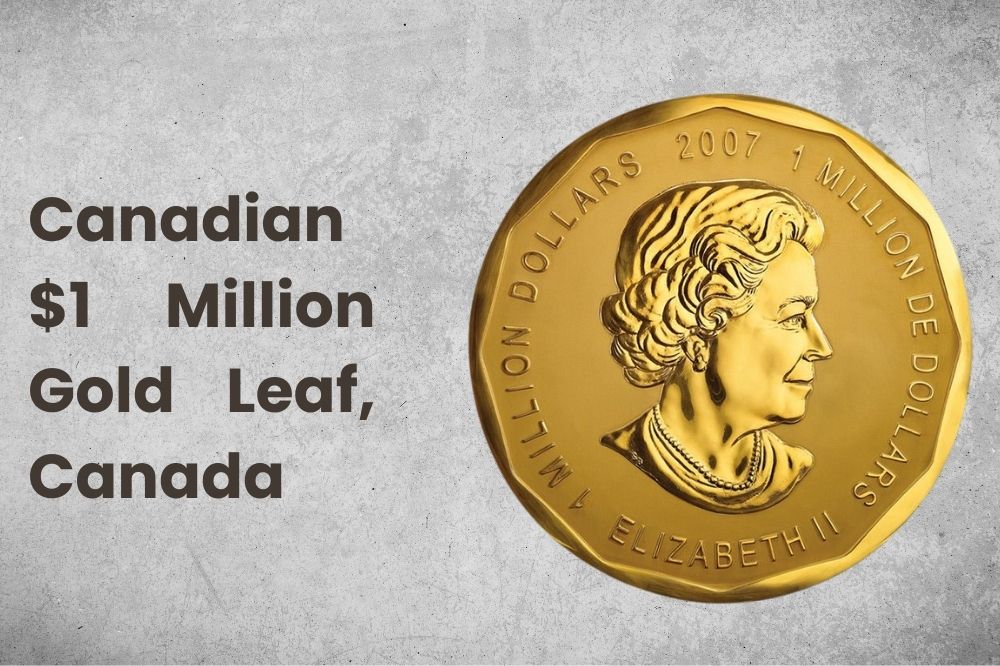
In 2007, the Royal Canadian Mint produced a set of six of what were then the largest gold coins ever made. Each coin had a face value of $1 million and was known as a Big Maple Leaf.
And big they most certainly were. Each one was over an inch thick, 20 inches across, and weighed an astonishing 100 kilograms.
Of course, coins this large were never actually intended for use as currency. Instead, they were a marketing device, intended to promote the Mint’s new range of 99999 purity 1-ounce Gold Maple leaf coins.
Six were made after a number of private buyers expressed an interest in owning one. One of the coins last came to the market in 2010, when it achieved a price of $4.07 million.
In 2017, however, there was drama when another of the coins was stolen from a museum in Berlin. It has never been recovered. Gold dust found on the clothing and car used by the robbers suggest it was sadly likely to have been melted down.
8. 10,000 Yuan, 10th Anniversary of Panda, China
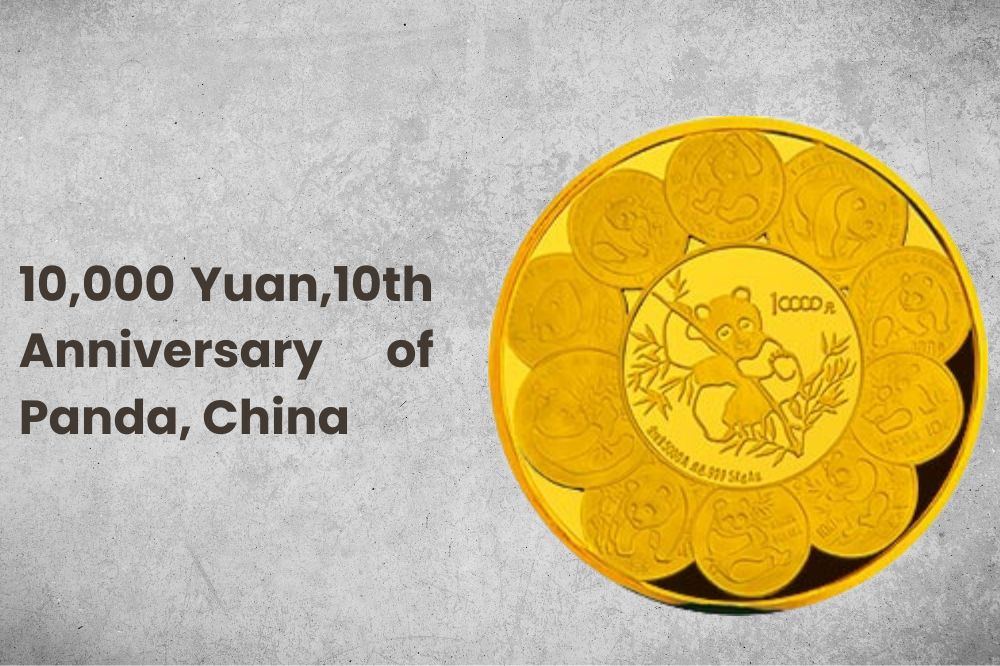
As the Canadian example shows, not all highly valuable coins are old. This one is another example of a younger yet precious coin – and it too was never intended for circulation.
The gold 10,000 yuan coin was produced by the Chinese Shenyang Mint in 1991. It was crafted to commemorate the anniversary of another gold coin – the more common panda coin. It weighed in at 10.7 pounds and measured 6 inches in diameter.
The center of the coin depicted a panda with a branch of bamboo. Surrounding it were ten miniatures of the engravings used on panda coins over the previous decade.
The coin’s 10,000 yuan face value is the equivalent of about $1,500. But the bullion value of such a large coin is well over $200,000. And its rarity as a commemorative piece makes it worth even more to collectors. When it came up for auction, it sold for over $1 million.
9. Silver Ruble Pattern, Russia
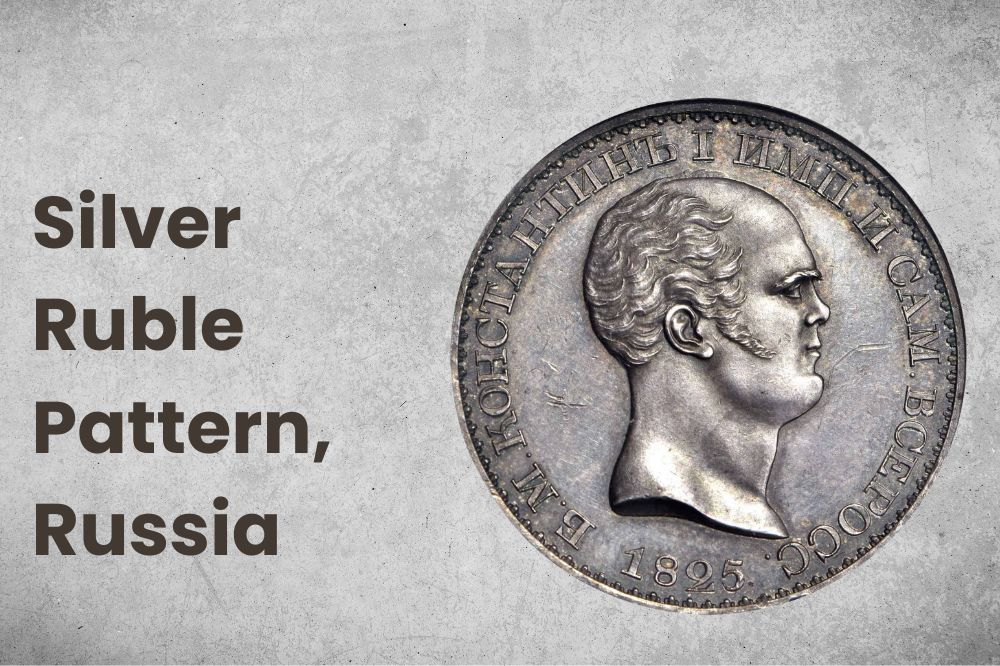
This Silver Ruble Pattern from Russia bears the head of the Emperor Constantine. But Constantine was never actually a Russian emperor. So how did it come to exist?
Well, Constantine’s older brother, Alexander I, died without legitimate heirs in 1825. Constantine was next in line for the throne – but he didn’t want it. He’d already seen his father assassinated and had no wish to suffer a similar fate. Instead, he passed the crown to his younger brother, Nicholas.
This coin dates from the brief period between Alexander’s death and Constantine formally renouncing the throne – just 15 days. Six specimens were produced in the period, five with edge lettering and one without. Two other plain edged coins were apparently produced later.
Three of these Constantine silver rubles now reside in public museums and institutions. The coin pictured here is a plain edged specimen and came up for auction in 2021. Then it had a guide price of between $400,000 and $600,000. In the event, it sold for a massive $2.64 million.
10. Servilius Caepio (M. Junuis) Brutus AV Aureus, Ancient Rome
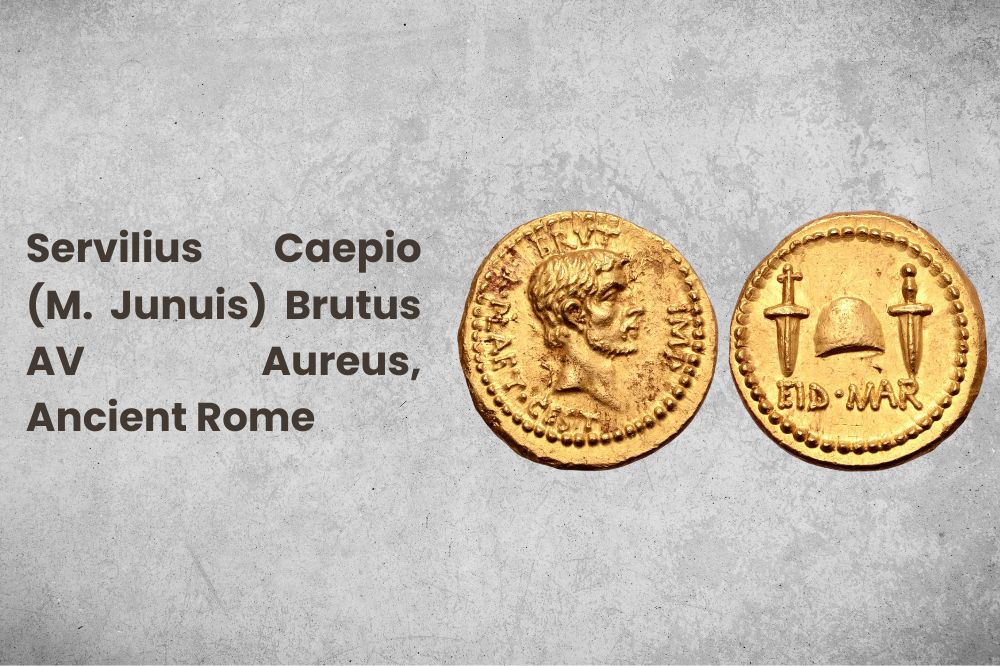
This gold coin from Ancient Rome was another that obliterated its pre-sale estimate.
It was produced in 42 B.C. and bore the bust of the emperor Brutus. The reverse was engraved with a pileus, a type of cap, with a dagger on either side. The design was considered to be a shameless celebration of the murder of Julius Caesar two years earlier.
Caesar was stabbed 23 times by a gang of upwards of 30 Roman Senators. One of the daggers on the coin represented that wielded by Brutus himself, the second by Cassius, his co-conspirator. This bloody history marked out this coin as something quite unique.
It was also exceptionally rare, one of only three such coins known to exist. Of the remaining two, one was on long-term loan to the British Museum, the other in the collection of the German Bundesbank. That made this specimen a rare and precious target for collectors.
And finally, it was in extremely good condition, with beautiful detailing and a lustrous shine.
It went to auction in October 2020 with a guide price of $500,000. The feverish bidding that day saw it sell for over $3.5 million.
The World’s Most Valuable Coins
We hope you’ve enjoyed learning more about ten of the most valuable foreign coins in existence. From huge commemorative editions to coins marking fascinating episodes in history, they are all special in different ways.
And if you don’t have a few million to spare, don’t despair! Many museums around the world have wonderful coin collections. Why not check them out, and see some of these amazing specimens at first hand?
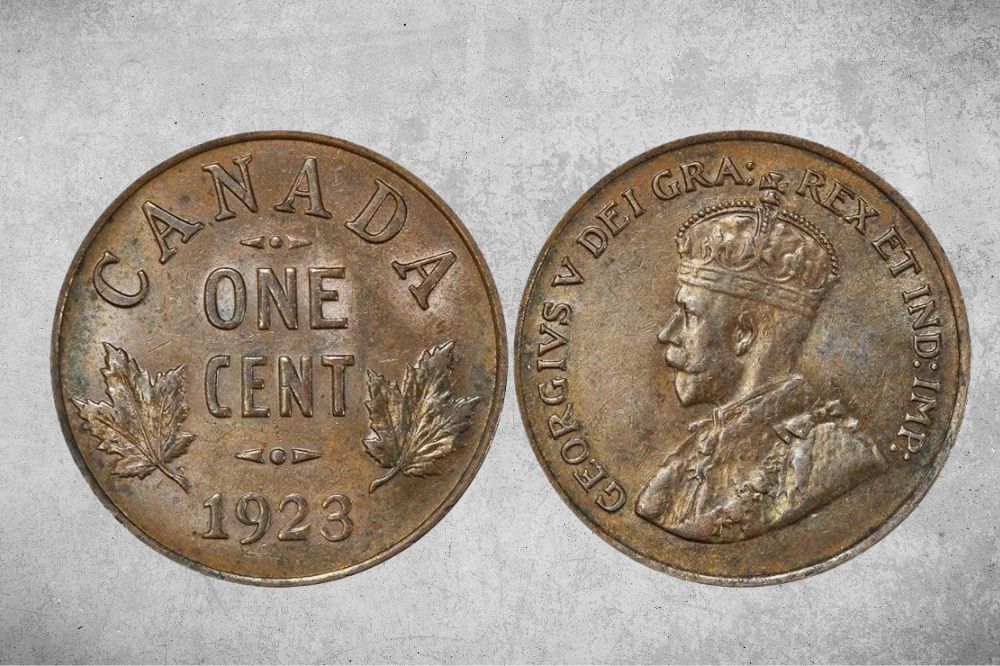
I have 1975 one Dime of Roosevelt.
I have 1965 one Dime of Roosevelt
I to sell if someone is interested please contact me for details
Thank you.
From: Francis Mtonga
Hello,
Can you please post pictures of these coins you have, both obverse & reverse of each coin ( front and back of each coin ) with more details
Thank You
From: Hoobie